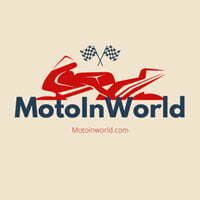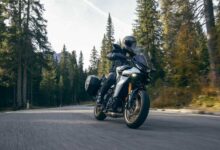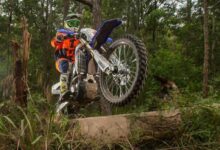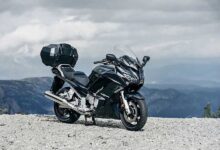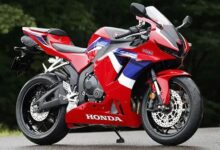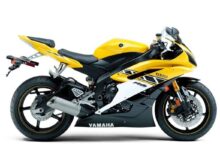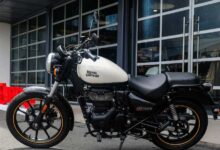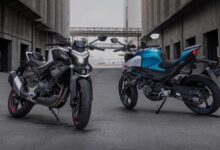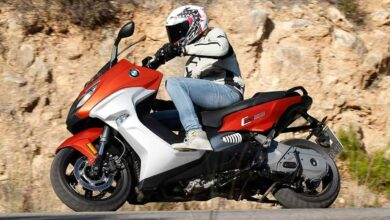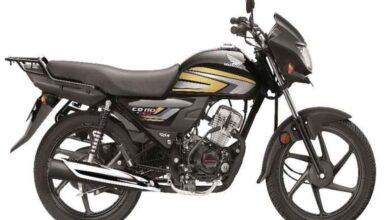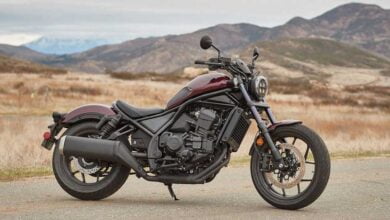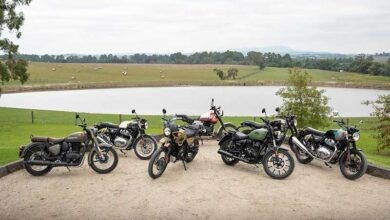Contents
- 1 Review of the Ducati 750: A Classic Motorcycle with Timeless Appeal
- 2 Description:
- 3 Introduction to the Ducati 750
- 4 Specifications and Performance
- 5 Design Features
- 6 Engine and Performance
- 7 Design and Aesthetics
- 8 Riding Experience
- 9 Maintenance and Reliability
- 10 Collectibility and Value
- 11 Fabio Taglioni and Desmodromic Valve Technology
- 12 Steering the Fat
- 13 Alimony
- 14 Engine and Performance
- 15 Design and Aesthetics
- 16 Pluck a Duck
- 17 Conclusion
Review of the Ducati 750: A Classic Motorcycle with Timeless Appeal
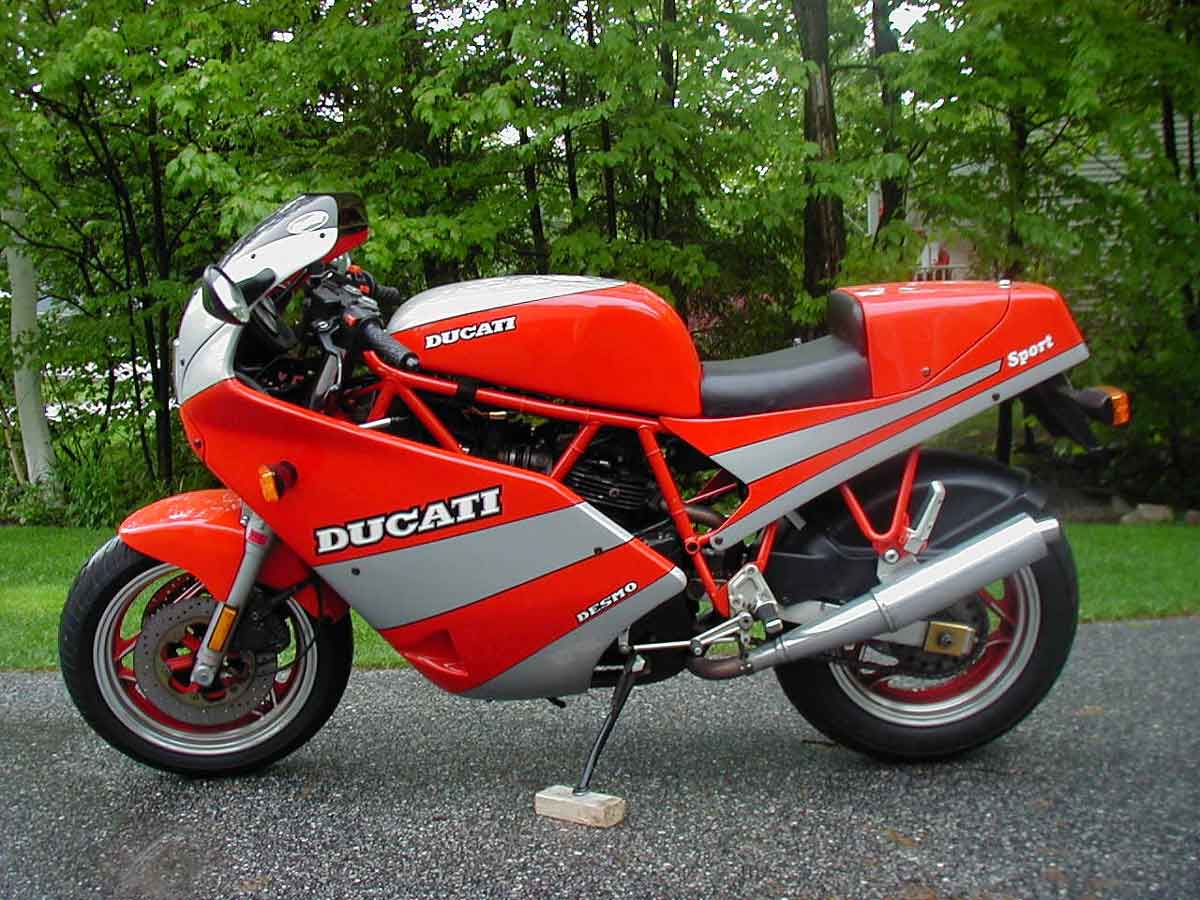
Description:
In this blog post, we will delve into the world of motorcycles and explore the iconic Ducati 750. With its rich history and timeless design, the Ducati 750 has captivated motorcycle enthusiasts for decades. We will take a closer look at its specifications, performance, design features, and why it continues to be a beloved classic among riders. So, let’s rev up our engines and embark on an exciting journey through the legendary Ducati 750.

The 750 Supersport Desmo was launched at the Milan Motor Show in November 1973.
In addition to its impressive performance, this bike also had several features that were seldom seen in a sport bike. The four-stroke engine was capable of meeting the demands of any motorcycling enthusiast, including racing fans, without requiring any special tuning.
This model was the result of meticulous design and a meticulous attention to structural details, which combined the power of the twin-cylinder engine with the exceptional mechanics of the renowned 750 Imola.
Introduction to the Ducati 750
The Ducati 750 is a legendary motorcycle that was first introduced in the 1970s. It quickly gained popularity due to its sleek design, powerful engine, and exceptional performance. With its distinctive L-twin engine configuration and superior handling, the Ducati 750 became a symbol of Italian craftsmanship and innovation.
Specifications and Performance
The Ducati 750 is equipped with a four-stroke, air-cooled, L-twin engine. This engine configuration not only provides a unique sound but also offers excellent torque and power delivery. The 750cc engine delivers an impressive output of around 60 horsepower, making it a formidable machine on the road. The motorcycle features a five-speed manual transmission that allows riders to smoothly shift gears and take full control of the bike’s performance. With its lightweight frame and agile handling, the Ducati 750 offers an exhilarating riding experience that is hard to match.
Design Features
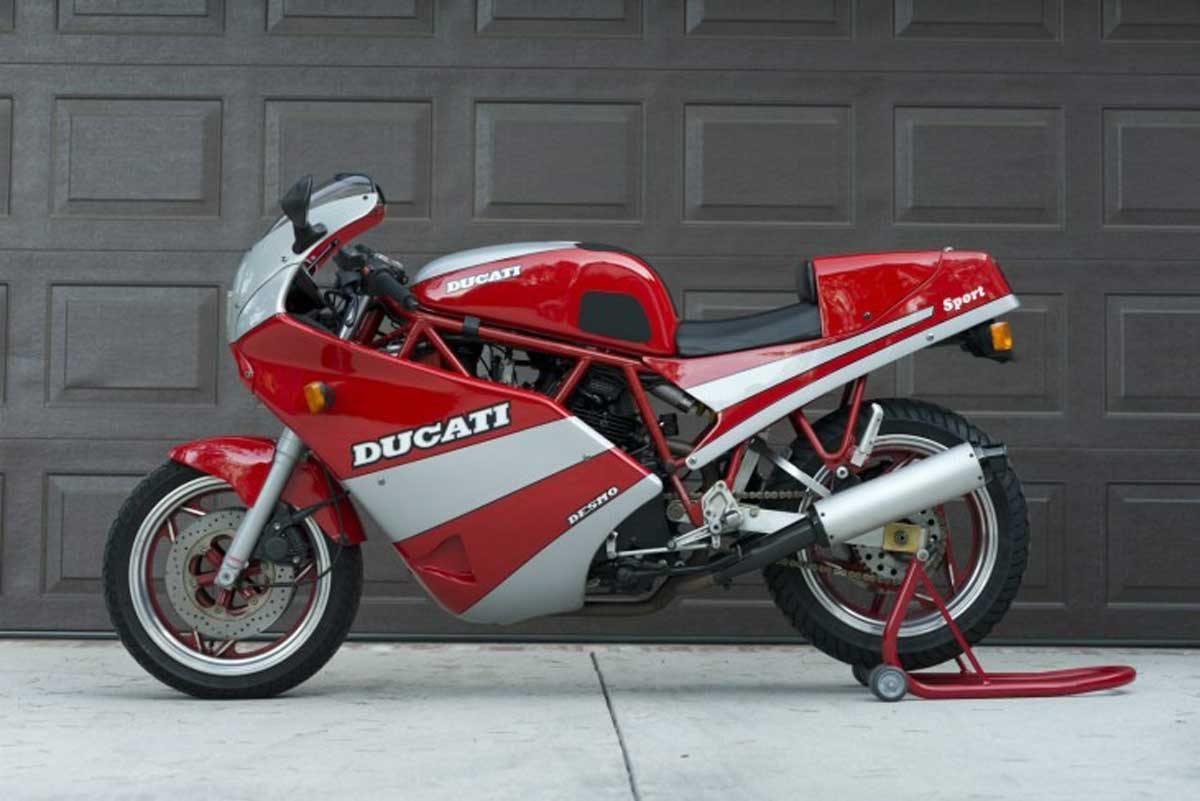
One of the defining characteristics of the Ducati 750 is its timeless design. The bike boasts a sleek and streamlined profile that exudes elegance and sophistication. Its iconic fuel tank shape, slim tail section, and round headlight give it an unmistakable look that turns heads wherever it goes. The Ducati 750 also features high-quality components and finishes, including premium leather seats, chrome accents, and polished aluminum details. These design elements not only enhance the overall aesthetics of the motorcycle but also showcase the attention to detail that Ducati is known for.
|
Displacement
|
748 cc
|
|
Maximum power
|
60 hp at 8000 rpm
|
|
Maximum speed
|
200 km/h
|
|
Dry weight
|
185 kg
|
Engine and Performance
The 1974 Ducati Super Sport 750, also known as the 750SS, is powered by a robust 748cc bevel gear-driven desmodromic OHC, 4-stroke, air-cooled, 90-degree L-twin engine. This impressive engine boasts a bore and stroke of 80mm x 74.4mm and a compression ratio of 9.5:1.
The unique L-twin engine meant that the front cylinder was practically vertical to the road, allowing for better air circulation and improved cooling for the rear cylinder. It also lowered the center of gravity, enhancing the bike’s handling.
The desmodromic valve gear system allows for more precise valve control without relying on springs. This groundbreaking design utilizes rocker arms and bevel-driven camshafts, distinguishing the Super Sport 750 from its competitors.
Desmodromic technology was notable for its improved efficiency and high-performance power delivery.
Design and Aesthetics

One of the most outstanding design aspects of the Ducati Super Sport 750 is its legendary “Green Frame.” The frame was specifically designed with racing in mind, featuring large diameter forks and a swingarm that offer excellent stability at high speeds.
This motorcycle was the first street-legal sport bike to incorporate three disc brakes, consisting of two Scarab discs at the front brakes and a single disc at the rear brake, providing incredible stopping power.
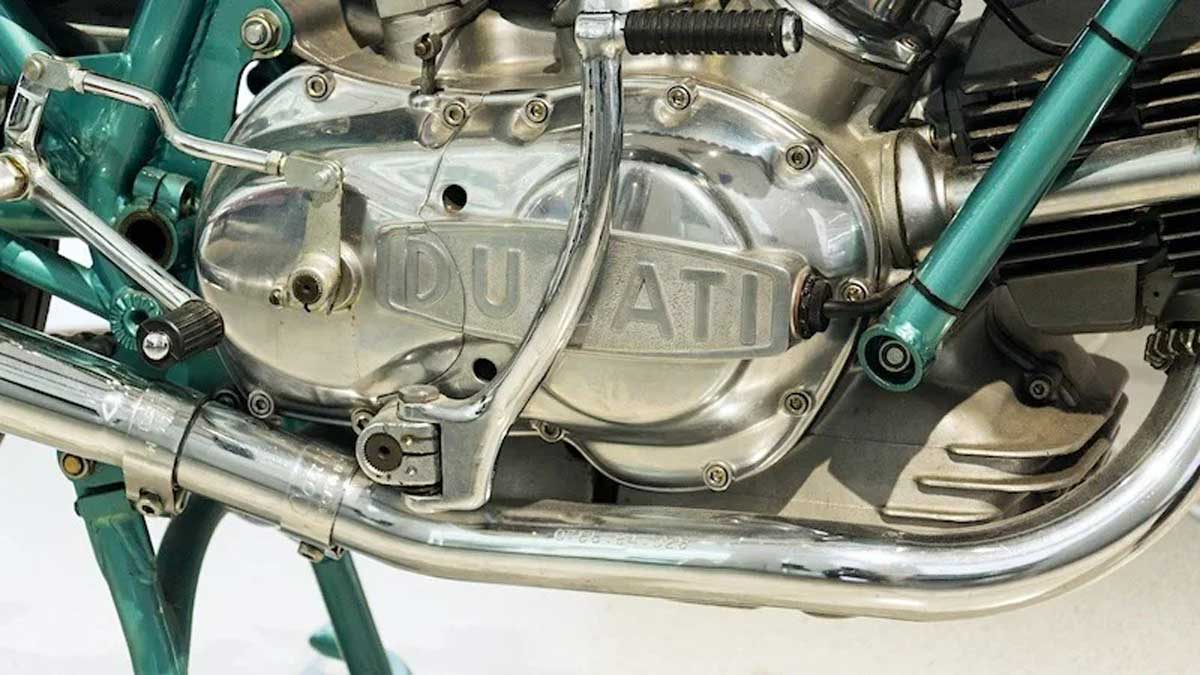
The 750 Super Sport’s fiberglass fuel tank is not only functional but also visually appealing, featuring a racing-style “looking glass” fuel gauge stripe. The distinctive tank, along with the half fairing and single seat, gives the Ducati 750 Super Sport a design very similar to the successful Imola bikes it was based on.
The Italian motorcycle maker ensured that both form and function were at the forefront of the design, creating a visually appealing and highly capable motorcycle that has remained a sought-after classic to this day.
The suspension features 38 mm Marzocchi telescopic front forks and dual shocks, Marzocchi 305 mm, 3-way adjustable for the rear suspension. These suspensions allow for stable cornering and rock-solid handling at high speeds, whether on the track or the road.
In conclusion, the 1974 Ducati Super Sport 750, with its innovative technology and groundbreaking design, has left a significant mark in the history of motorcycles. It has become a collector’s dream and a symbol of Italian design and engineering excellence.
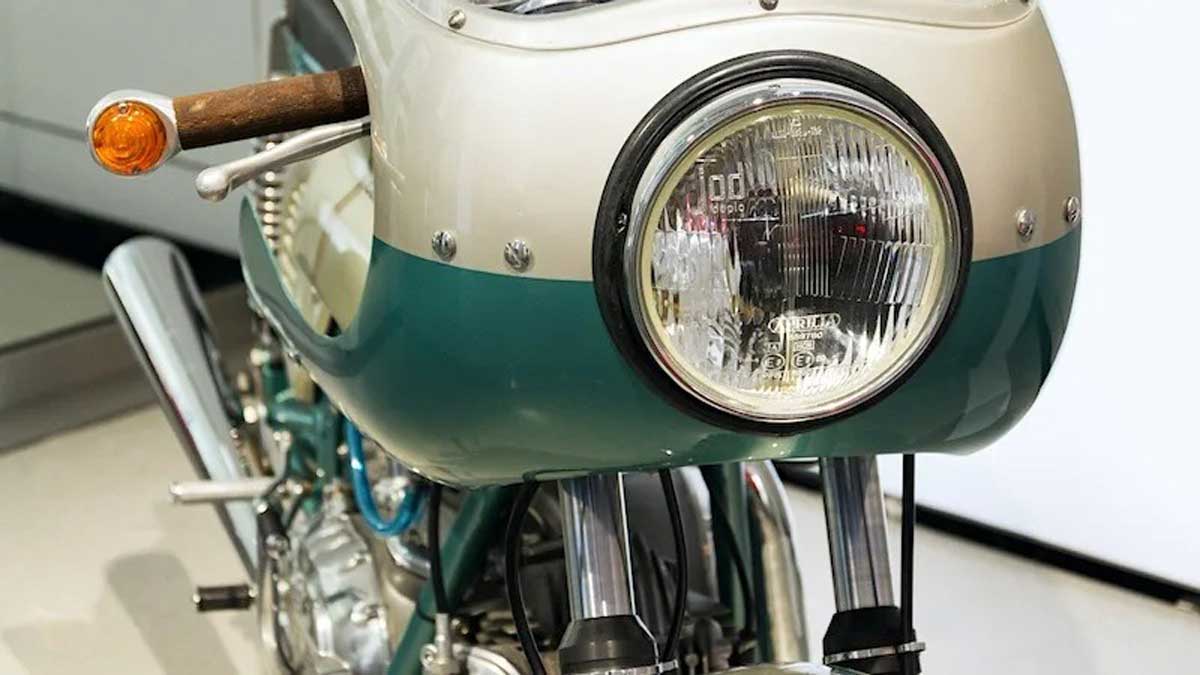
The thought of testing Ducati’s new 750 Sport had chief roadtester Geoff Seddon weak at the knees in anticipation. Would this be the bike to dethrone the Ducati faithful? Here’s Seddon’s report, superbly backed by Peter Beattie’s photography.
It was a bit like rushing home to tell the folks that you’d been accepted at a fitter’s course at Tech, only to find that your big brother had just been awarded his Masters in Mechanical Engineering.
The new Ducati 750 Sport was released in the shadow of the mighty 851 Strada, certainly the most exciting new Ducati to be released in 15 years and one of the landmark bikes of the Eighties, period.
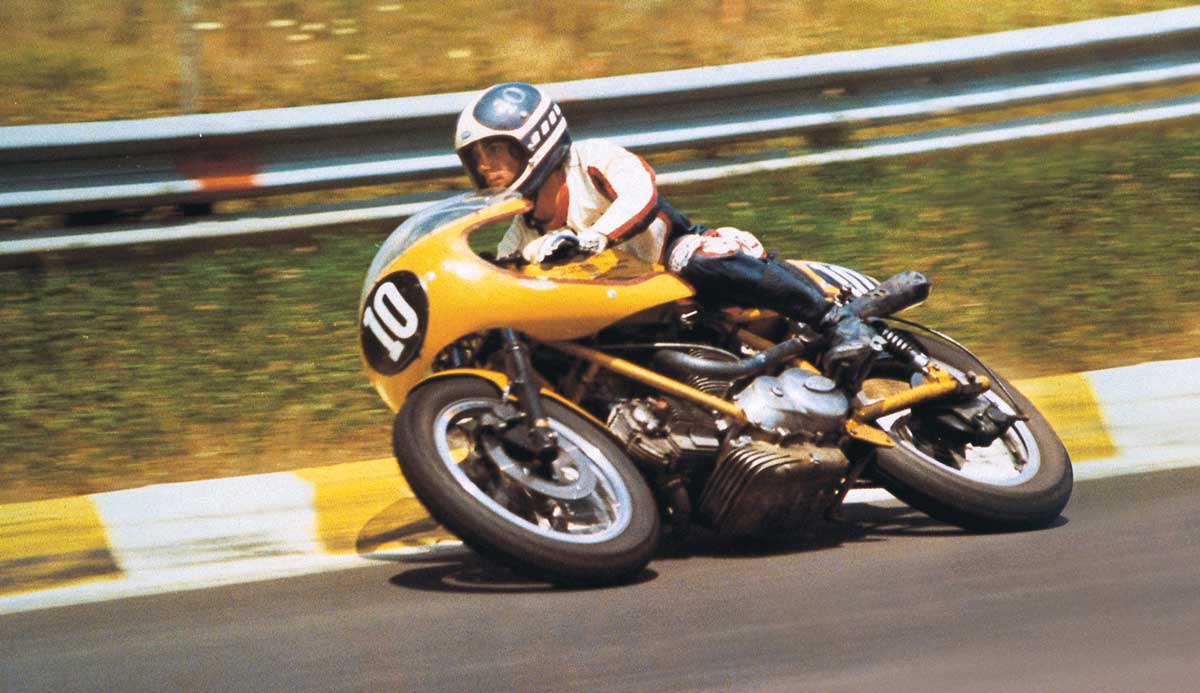
It’s difficult to think of a harder act for the Sport to follow.
All the early reports from overseas raved about the performance of the big eight-valver, often with an “Oh yeah, by the way…” reference to the 750.
Slowly, gradually, a picture emerged of the Sport as a cross between a Paso and an F1, and we started to take a bit more notice.
By the time the new bikes arrived in Australia, we’d half convinced ourselves that the 851 would be an expensive, unrideable, temperamental brute only suitable for the racetrack, while the 750 Sport sounded kind of good – not too expensive and if it looked and ran like an Fl with the comfort and civility of a Paso, then we could be onto a winner.
Of course, the 851 turned out to be much, much more. It was by far the best handling Duke ever, but it was the motor that took us all by surprise. I don’t think anyone expected the 851 Ducati to be as quick as it was. Twins just didn’t go like that.
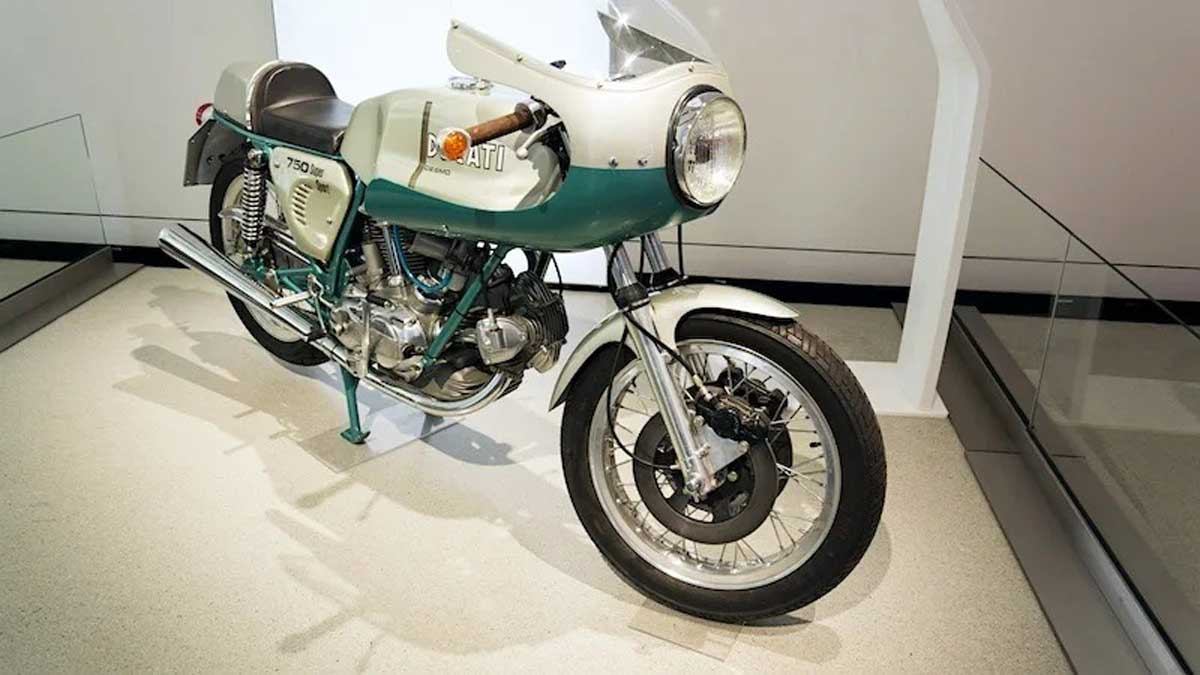
I stepped off the 851 and hopped straight on the 750 Sport. Again, it was like celebrating your birthday on Boxing Day, or finding out that your parents have just bought you a CX500 while you’ve been out test riding a new GSXR1100. By the end of the test, I had very mixed feelings about the 750 Sport. It was a great little bike, but …
Read More:
Ducati Diavel V4 2023: The Ultimate Muscle Bike
Ducati Scrambler 2023: A Culminate Combination of Fashion and Execution
Ducati GP11: A Triumph of Engineering and Speed
Life returned to some semblance of normality. Test bikes came and went, but with the procession came a realization that lots and lots of bikes paled in direct comparison to the 851. Perhaps I’d been a bit harsh on the 750 Sport. I wondered if I could get it back for a second helping.

I’m glad I did. Some of my earlier misgivings remained, but my enthusiasm for the bike grew, and it was a lot harder to give it back the second time. The bike was a Ducati to its core, albeit a Ducati of the old school, but its name took on a delicious irony.
The first Ducati 750 Sport was released in 1972. A tuned (42 kW), cafe racing version of the newly released GT750, it established the 90-degree V-twin as synonymous with Ducati sports motorcycles, a situation that exists today and is likely to remain for a very long time. It also became the mother of a whole generation of ‘bevel gear’ sports Ducatis, culminating in the 1000 cc Mike Hailwood Replica.
If the first 750 Sport was the first of a great line, then the new 750 Sport represents the last of an equally prestigious family. The Pantah, first released in 1979 in 500 form, offered significant engineering advantages and a previously unheard-of dollop of reliability compared with the big twins.
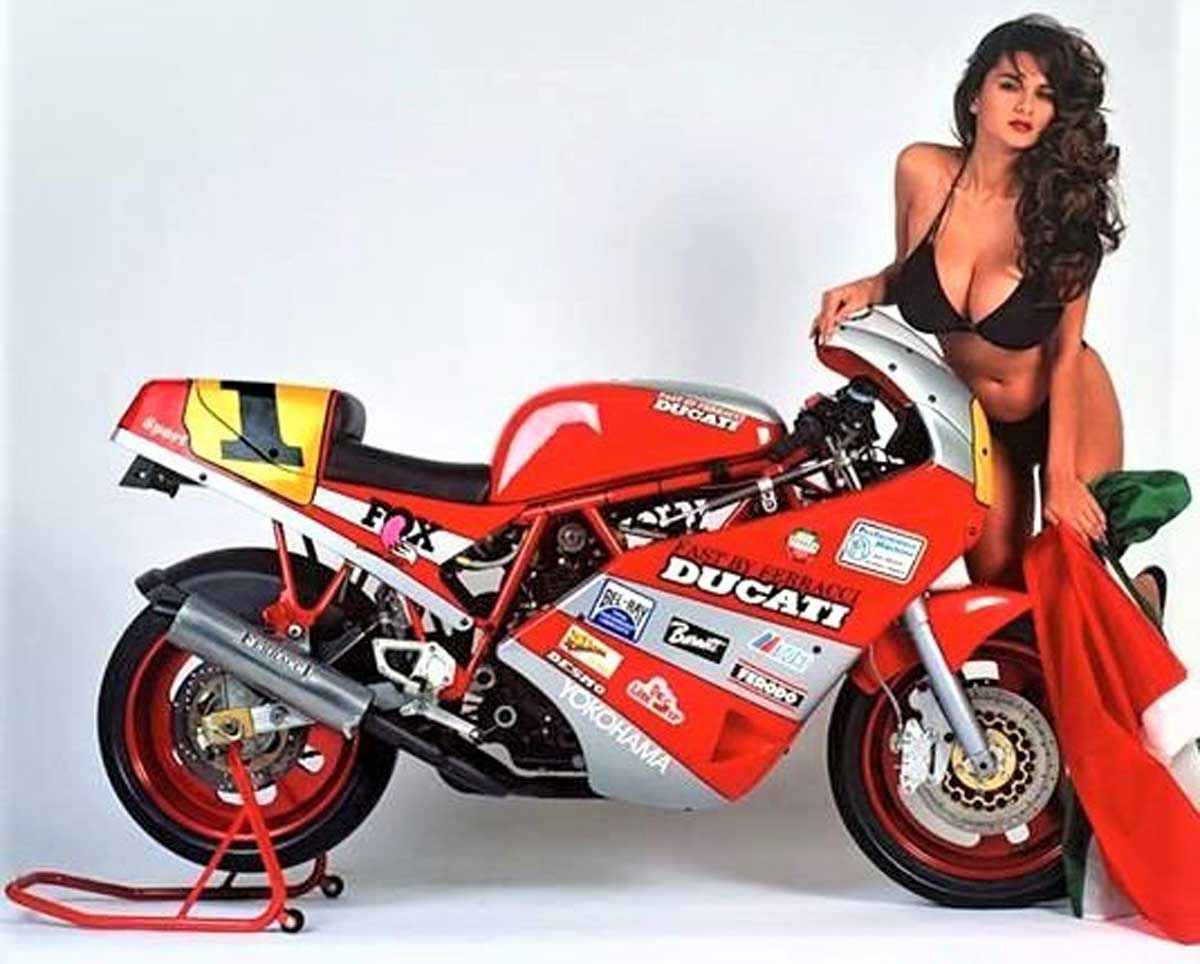
The motor grew to 600 cc, then 650 briefly, before forming the platform for the crude but infinitely satisfying Fl and the svelte 750 Paso. Its last resting place is the 750 Sport. The belt-drive, SOHC, air-cooled motor is suddenly old, making hard work of modern noise regulations and simply not able to be tuned to give the performance a lot of riders appear to want these days.
Its 54 kW at 8500 rpm isn’t much of a power figure alongside the 79 kW of the Kawasaki ZXR750 or the claimed 85 kW of a GSX-R750. It’s not so much a matter of a lower top speed because anyone who reckons a top speed of 200 km/h is limiting is probably a fool or a liar and arguably both. However, it does lack the punch of a well-ridden Japanese sports bike out of the corners and along short straights and so on.
Yet this won’t prevent the occasional 750 Sport from collecting its fair share of scalps, particularly by enthusiasts who know both their bikes and their roads well. Woe betide the ZXR rider who takes on Anthony Seymour along the tighter sections of the Princes Highway without doing his homework first.

I remember my inaugural strop up the Old Pacific Highway. The bike was easy to ride fast, and I found myself working the 748 cc, four-valve V-twin hard, getting on the gas early out of corners, giving it a big fistful and watching the tacho like a hawk. Hit nine, upshift, hit nine again, upshift, gas on, gas off, back a gear, back a gear, line it up, take the apex, steady, gas on hard and do it all again. It was physically exhausting but wonderfully enjoyable, riding a thoroughbred sportster to something approaching its potential. Handling and steering felt spot on at those speeds.
An early model GSX-R1100 came from nowhere and took me cleanly along a short straight. The rider was smooth, as you need to be on bikes like that on tight roads, and hit the next corner with just enough brakes and a lot of style.
Ducati Diavel V4 2023: The Ultimate Muscle Bike
Riding Experience
Riding a Ducati 750 is a truly immersive experience. The powerful engine delivers smooth acceleration, allowing riders to effortlessly surge forward. The bike’s responsive handling and precise maneuverability make it a joy to ride through twisty roads or navigate crowded city streets. Despite its sporty nature, the Ducati 750 offers a comfortable riding position, with well-padded seats and ergonomically placed handlebars. This ensures that riders can enjoy long journeys without feeling fatigued. Whether you’re a seasoned rider or a beginner, the Ducati 750 provides a thrilling and enjoyable experience on two wheels.
Maintenance and Reliability
Maintaining a Ducati 750 is relatively straightforward, thanks to its durable construction and high-quality components. Regular maintenance, such as oil changes, chain adjustments, and brake inspections, will help ensure the longevity of the motorcycle. It’s worth noting that older models of the Ducati 750 may require more frequent maintenance due to their age. However, with proper care and attention, these bikes can still provide years of reliable service. Ducati has a strong reputation for building motorcycles that stand the test of time, and the Ducati 750 is no exception.
Collectibility and Value
The Ducati 750 has become a highly sought-after motorcycle among collectors and enthusiasts. Its classic design, limited production numbers, and historical significance have contributed to its increasing value over the years. Owning a Ducati 750 not only allows riders to experience its exceptional performance but also own a piece of motorcycling history. For those looking to buy a Ducati 750, it’s important to do thorough research and consider factors such as the bike’s condition, mileage, and authenticity. Prices for well-maintained Ducati 750s can vary significantly, with pristine examples commanding a premium in the market.
Fabio Taglioni and Desmodromic Valve Technology

Fabio Taglioni was not only the architect behind the 1974 Ducati Super Sport 750 but also the innovator of Ducati’s signature Desmodromic valve technology. Desmodromic valve systems are unique because they use separate cam lobes for both opening and closing the valves, unlike the traditional spring-operated design.
This revolutionary technology minimized valve float and improved timing at high RPMs, offering better performance and reliability.
The Ducati 750 Super Sport was equipped with Desmodromic valve technology, paired with a 748cc bevel gear-driven overhead cam (OHC) air-cooled 90° L-twin engine. With an 80mm x 74.4mm bore and stroke and a 9.5:1 compression ratio, this engineering feat produced an impressive 70 horsepower at 9,000 rpm.
This allowed the motorcycle to achieve a top speed of 130 mph (209 km/h), putting it on par with the four-cylinder 900cc Kawasaki Z1 (the fastest production bike upon its release in 1972), making it not just a visual masterpiece but also a powerhouse on the road.
In conclusion, the 1974 Ducati Super Sport 750 holds a special place in history as an innovative, rare, and highly sought-after motorcycle that embodies both the genius of Fabio Taglioni and the racing spirit of Ducati. With its rich history, captivating aesthetics, and groundbreaking Desmodromic valve technology, it remains a true marvel in the world of motorcycles.
Steering the Fat
In terms of the front forks, there is limited adjustability on the Sport. Apart from experimenting with different grades of fork oil and springs, the twin 40 mm Marzocchi forks cannot be adjusted. I found that they tended to bounce off bumps, which was a bit unsettling on a light bike (195 kg dry) with a large 16-inch front wheel and no steering damper.
However, I managed to survive the test period without experiencing any tank slappers, although my speeds were lower on unfamiliar roads compared to what they might have been otherwise. Like the Paso and the 851, the 750 places a lot of stress on the front tire. However, unlike the trick M1R Marzocchis on the other bikes, which inspire almost fanatical confidence in the front end, the cheaper units on the Sport do not. On smooth surfaces or familiar roads where you can steer around rough patches, the forks work well enough and provide good feedback without any issues.
The twin opposed-piston Brembo brakes have been around for a long time and show their age in terms of braking power. However, any disadvantage is mostly compensated by excellent brake and suspension feedback, as well as arguably the best tires money can buy. While having the power of the 851’s four-spot calipers would be nice, I did not really miss them considering the Sport’s slower engine and less sophisticated suspension.
The engine of the Sport is based on the one found in the Paso. It performs similarly to the Paso and sounds like it too. However, it’s not as smooth and tends to shake at higher revs. The reason for this is likely due to the frame. The Paso’s frame, although ugly, is good at absorbing secondary vibrations from the 90-degree twin engine. On the other hand, the Sport’s frame is more aesthetically pleasing but transfers more vibrations to the rider. The vibration is not intrusive, but rather a constant reminder that it’s a twin-cylinder four-stroke engine working hard down there, which I find quite enjoyable.
One limitation of the Pantah heritage is the five-speed gearbox, which has overall gearing that is a bit shorter than what you would expect from a 750 cc twin. At 5,000 revs in top gear, the indicated speed is around 120 km/h. In comparison, Bevel SS Dukes used to reach speeds of around 150 km/h at the same revs with standard gearing. However, with the motor producing significant horsepower from under 4,000 rpm, this gearing results in strong acceleration in top gear at touring speeds, albeit with a less relaxed feel. The clutch and gearbox operation were flawless.
The Sport shares the same twin throat 44 DCNF Weber carburetor as the Paso, which has received criticism. Unfortunately, the test bike also had the same off-idle carburetion flat spot as the Paso. However, like the Paso, this only becomes noticeable during city riding and is not a big deal once you adjust to it. From 3,000 rpm to the 9,000 rpm redline, the bike carburetes cleanly, with a lovely flat torque curve that has become a Ducati trademark.
Alimony
Engine maintenance on the Sport is easier compared to older Ducati engines due to a revised shimming arrangement for valve adjustment. However, access to many components is more fiddly. Anthony Seymour provided details in the previous issue on what is involved. Overall, the motor should be enjoyable to live with, especially for riders who like to tinker with their bikes as well as ride them. A well-maintained example should last for a long time. Alternatively, the Sport would make a great hot rodder’s special for those who enjoy modifying their motorcycles, as there are plenty of aftermarket parts available for this long-running motor.
I can also report that, like older Ducatis, a minor crash does not necessarily result in significant financial damage. During a Ulysses Club ride day, a rider put the Sport down quite heavily on wet grass. The bike only required a new blinker and a minor repair to the fairing. Unfortunately, the petrol tank was also damaged, developing a slow leak that cut short our first look at the bike. However, this was repaired inexpensively.
In terms of appearance, the Sport is very small for a modern 750 and looks great. Traditionalists will appreciate the styling that allows a glimpse of the motor. However, I had to laugh at the nickname given to the Sport by some die-hard Ducati big twin enthusiasts. They call it the ‘Lolly Pop’. Luddites!
The paintwork is of high quality, and the bike sits low on the road thanks to the trick Oscam 16-inch wheels and large Pirelli radials – a 130/60 ZR16 on the front and a 160/60 ZR16 on the back! The bike’s low profile adds to the thrill of riding hard through corners by bringing you closer to the ground, which is a fantastic feeling. The only downside is the limited space between the seat and footpegs, which is typical for sports bikes. However, overall, the seat is good enough, with the lean to the clip-ons just right. Pillion accommodation, unfortunately, is standard for this type of bike.
Ducati is keeping up with the times by including features such as rows of bright idiot lights (neutral, oil pressure, battery charge, headlights, high beam, and fuel) and a steering lock incorporated in the ignition switch. However, not all progress is beneficial. The spring-loaded sidestand could catch unsuspecting riders off guard (if you take the weight off it for a moment, it retracts). Additionally, there is no fuel gauge or reserve tap, just a low fuel warning light. Furthermore, the mirrors, although better than those on the Paso, are not great. In 1989, good rear vision mirrors are something that every sport rider needs.
The tools are located under the rear cowling (the battery is up front, under the steering head), but you’ll need an Allen key to remove the solo seat attachment before you can access the tools. It’s a bit frustrating, even the Italians are doing it.
However, all these things are minor if you’re interested in owning a 750 Sport. As the last of a great line of air-cooled V-twins, it’s almost expected that the bike would have its fair share of quirks, and the Sport does not disappoint. The carburetor hiccups in city riding are compensated by the bike’s ability to navigate city traffic like no other bike I’ve ridden. And although it doesn’t have the raw power of Japanese 750 fours, the Pantah engine has always been and remains a very satisfying engine to own and ride, and the rest of the bike is well-matched to its performance. It also makes all the right sounds.
The saddest part is that bikes like this are becoming increasingly rare these days. We are witnessing the end of an era. If you’re looking for a permanent reminder of what sports motorcycles were like before the rise of bikes like the GSX-R Suzuki, then Ducati’s 750 Sport could be just what you’re looking for.
Engine and Performance
The 1974 Ducati Super Sport 750, also known as the 750SS, is powered by a robust 748cc bevel gear-driven desmodromic OHC, 4-stroke, air-cooled, 90-degree L-twin engine. This impressive engine boasts a bore and stroke of 80mm x 74.4mm and a compression ratio of 9.5:1.
The unique L-twin engine meant that the front cylinder was practically vertical to the road, allowing for better air circulation and improved cooling for the rear cylinder. It also lowered the center of gravity, enhancing the bike’s handling.
The desmodromic valve gear system allows for more precise valve control without relying on springs. This groundbreaking design utilizes rocker arms and bevel-driven camshafts, distinguishing the Super Sport 750 from its competitors.
Desmodromic technology was notable for its improved efficiency and high-performance power delivery.
Design and Aesthetics
One of the most outstanding design aspects of the Ducati Super Sport 750 is its legendary “Green Frame.” The frame was specifically designed with racing in mind, featuring large diameter forks and a swingarm that offer excellent stability at high speeds.
This motorcycle was the first street-legal sport bike to incorporate three disc brakes, consisting of two Scarab discs at the front brakes and a single disc at the rear brake, providing incredible stopping power.
The 750 Super Sport’s fiberglass fuel tank is not only functional but also visually appealing, featuring a racing-style “looking glass” fuel gauge stripe. The distinctive tank, along with the half fairing and single seat, gives the Ducati 750 Super Sport a design very similar to the successful Imola bikes it was based on.
The Italian motorcycle maker ensured that both form and function were at the forefront of the design, creating a visually appealing and highly capable motorcycle that has remained a sought-after classic to this day.
The suspension features 38 mm Marzocchi telescopic front forks and dual shocks, Marzocchi 305 mm, 3-way adjustable for the rear suspension. These suspensions allow for stable cornering and rock-solid handling at high speeds, whether on the track or the road.
In conclusion, the 1974 Ducati Super Sport 750, with its innovative technology and groundbreaking design, has left a significant mark in the history of motorcycles. It has become a collector’s dream and a symbol of Italian design and engineering excellence.
Pluck a Duck
We were approaching a slower, trickier section of the road, and it was obvious that the rider knew the Highway as well as I did. However, the big Suzuki was slow to react in this environment, and the small Duke was closing the gap. Then the road opened up a little, and the advantage was lost.
In the spirit of true Sunday scratchers everywhere, the Suzuki rider resisted the urge to speed off on the longer straights, using just enough power to maintain a safe distance in front of the pesky twin behind. I responded by pushing the Duke a little harder into corners.
The 750 Sport steers like a Paso, which is unusual at first but becomes bloody terrific once you get used to it. However, at this point, the bike became a little less stable, needing firmer damping on the rear monoshock due to the extra strain. I was now getting back behind the fairing on the straights, braking later, and engaging in some serious acrobatics on the sweepers while constantly revving the engine for all it was worth.
Which, frankly, is a lot. While neither of us was doing anything desperate, and acknowledging that the GSX-R1100 could have easily gained an insurmountable advantage if the rider chose to, I had an absolute blast. While the Suzuki rider might have been in fast/cruise mode, I was essentially racing!
In this environment, the 750 Sport lives up to its 1970s namesake and is certainly one of the most entertaining bikes I’ve ridden in a while. The tires are fantastic, albeit quite expensive (around $225 for a new tire every five or six thousand km), the brakes provide sufficient power with above-average feel, and most of the suspension quirks can be tuned out with some patience. The frame is as good as you would expect from Ducati, but while it may owe its heritage to the F1, the ride is slightly less harsh.
Rebound damping adjustment on the rear Marzocchi shock is as close to infinite as you can get. The softest setting is zero damping – with no air (which controls compression damping), the bike will bounce up and down on the spring for a long time, while at its firmest setting, it behaves like a pneumatic strut. With about sixty settings in between, finding the right combination felt like it would take forever. Fortunately, accessing the damping adjustment is fairly straightforward, although adjusting the spring preload (via a continuous thread arrangement) requires removing the tank.
Conclusion
The Ducati 750 is a true icon in the motorcycle world. Its timeless design, powerful performance, and exhilarating riding experience have solidified its place in history. Whether you’re a collector, enthusiast, or simply someone who appreciates classic motorcycles, the Ducati 750 is a machine that deserves admiration. From its distinctive engine configuration to its elegant design features, the Ducati 750 continues to captivate riders and leave a lasting impression. So, if you ever have the opportunity to ride or own a Ducati 750, don’t hesitate to seize the chance – you won’t be disappointed.
Motoinworld
Facebook: https://www.facebook.com/Motobikeinworld
Twiter: https://twitter.com/motoinworld2023
Instagram: https://www.instagram.com/motoinworld/
Pinteres: https://www.pinterest.com/motoinworld/
